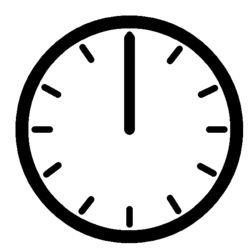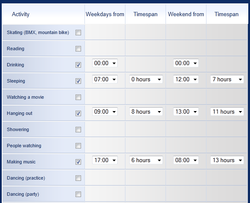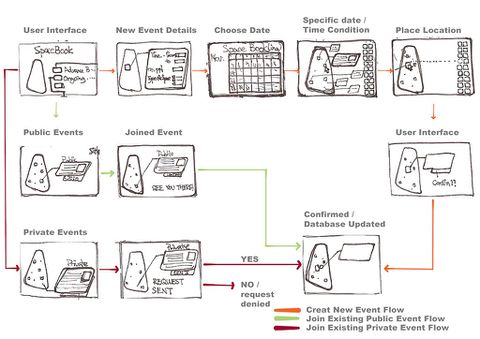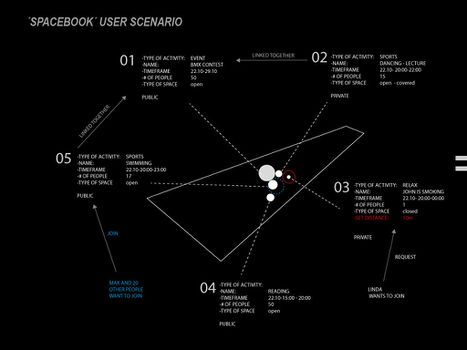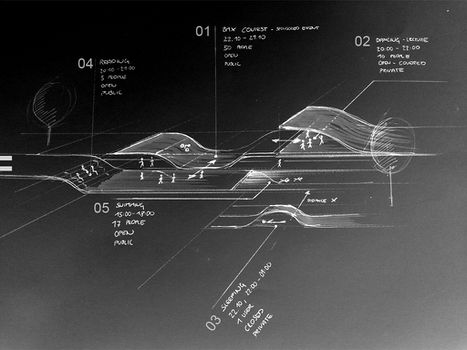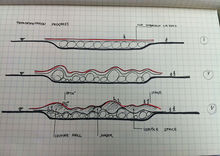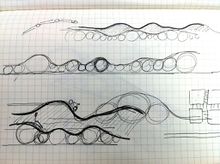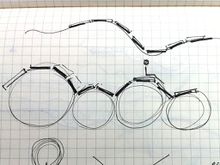atom02:Home
Contents |
"HOW CAN A SITE SUSTAIN ACTIVITY 24/7 ?"
THE SITE
Problems:
- The site has no program
- There is no landscaping or landscaping attributes (e.g. lamps, benches)
- The lush green border around the site works like a fence during summer
- Very diverse programming around site, site is leftover space.
CONCEPT STATEMENT
and this simplification of use - meaning fewer users, with fewer different purposes and destinations at hand - feeds upon itself
...a kind of unbuilding, or running-down process is set in motion...the infusion would obviously have to result in the presence of
maximum numbers of persons at the times when the district needs them most for time balance..."'
This is a collage from Jacobs' book. The book promotes an almost volatile, effervescent city life of streets lined with mixed-uses
that create activity at different times in the day which leads to a constant presence of users / inhabitants. All this makes for a
diverse and vital city life where even though we are strangers we step out of our individuality and participate in the public life.
We wish to build upon this.
A website works 24/7 and is continuously evolving; e.g. a wiki page where the user is free to add content and to make it public worldwide.
By taking the concept of hyperspace we propose a site which will permit a widespread and ever-changing spectrum of activities throughout
the whole of the day. The site will be linked with an online website for booking activities, thus it will be continuously changing and
allow the interweaving of human interaction (a lecture hall, next to a performance space next to individual study-rooms, etc).
This functionality will create a trace of human activity; a new user will have the option of seeing the previous activity and form.
See also:
The Death and Life of Great American Cities
DESIGN CHALLENGE
* STEP 01: ONLINE QUESTIONAIRE
The goal of the user questionnaire is for possible users to tell us what activity they want to do and when they want to do the activity during the day.
Having this information will help us to create an estimate on the spread of activities through the day.
The link to the online questionnaire will be send to as many people as possible, to get the best overview of demands.
The questionnaire results show us 24/7 activity is possible and that some activities are more attractive to user 1 than they are to user 2.
We took the 8 most popular activities and conducted a research on different criteria that are closely linked to the activities.
We call this the activity research
STEP 02: SYSTEM SCHEMATICS:
The idea of 'Spacebook':
Spacebook is a part of Facebook to address as many people as possible, without trying to create another social network platform.
'Interface Diagram'
'User - Interface'
'User Scenarios'
* STEP 03: PHYSICAL SYSTEM:
See also the progression on creating the site mechanism or:
INVOLVED PEOPLE
SPONSORS
The sponsors could be a joint partnership between TU Delft, the municipality of Delft and a third investor - contractor.
EXPERTS
We believe that with the expertise and general know-how provided by the various departments inside the Faculty
(Mechanical Engineering, Materials, Computer Science, Structural Engineering)
USER - CLIENT
The user is the client. He has the options of choosing his desired activity and size of the space required by a system of online booking.
Therefore the site will continuously "pay for itself" and generate profit.
See also:
SUSTAINABILITY
We suspect the traffic to be an untapped source for energy.
See also:
